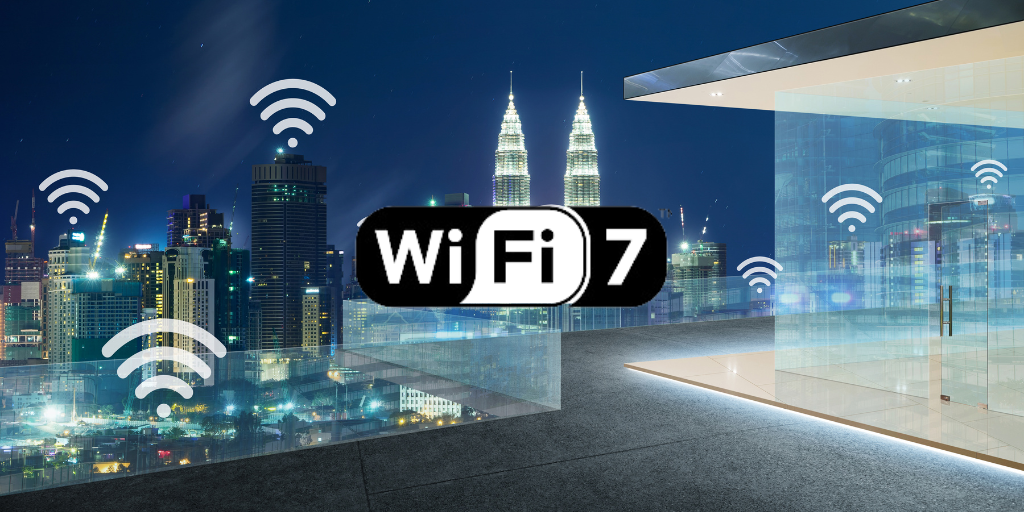
Blog
As the world of technology advances, wireless networking continues to play a pivotal role in shaping how businesses and individuals connect and operate daily. The introduction of Wi-Fi 7, or IEEE 802.11be, marks a significant leap forward, offering transformative improvements over its predecessors. This blog explores the critical features of Wi-Fi 7 and why IT professionals should take notice.
What is Wi-Fi 7?
Wi-Fi 7 is the latest iteration in the series of Wi-Fi standards set by the IEEE (Institute of Electrical and Electronics Engineers). This new standard aims to address the growing demand for higher data rates and improved efficiency in wireless communications. With the explosion of IoT (Internet of Things) devices, increased video streaming, and a rise in remote work, the capabilities of Wi-Fi 7 could not come at a more critical time.
Key Features of Wi-Fi 7
1. Increased Bandwidth and Higher Data Rates
Wi-Fi 7 introduces significantly higher data rates, potentially up to 46 Gbps, which is a substantial increase from the 9.6 Gbps offered by Wi-Fi 6. This enhancement comes from expanded channel bandwidth, including channels up to 320 MHz, and improved modulation techniques capable of supporting higher-order QAM (Quadrature Amplitude Modulation).
2. Improved Latency
Latency improvements are a cornerstone of Wi-Fi 7, which aims to reduce the lag time to just a few milliseconds. This feature is particularly beneficial for real-time applications such as online gaming, video conferencing, and virtual reality, where even minor delays can degrade the user experience.
3. Enhanced Multi-Link Operation (MLO)
One of the most anticipated features of Wi-Fi 7 is Multi-Link Operation, which allows devices to transmit data across multiple frequency bands simultaneously. This not only boosts data transfer rates but also enhances reliability and reduces latency by dynamically adapting to the least congested bands.
Why IT Should Care
Addressing Network Congestion
With an increasing number of devices per person and high-demand applications, network congestion is a growing concern. Wi-Fi 7’s higher throughput and smarter channel management directly address these issues, ensuring smoother operations in densely populated environments like offices and public spaces.
Supporting a Diverse Device Ecosystem
As IoT devices proliferate, networks must support a broad range of device capabilities and service requirements. Wi-Fi 7’s ability to manage diverse data needs efficiently makes it an ideal choice for environments with a mix of IoT devices, smartphones, tablets, and other technologies.
Preparing for Future Technologies
Wi-Fi 7 is designed not only to meet current demands but also to anticipate future trends. For example, the shift towards more immersive AR and VR technologies will benefit significantly from Wi-Fi 7’s high-speed and low-latency capabilities. IT departments must stay ahead of the curve to accommodate these emerging technologies without performance bottlenecks.
Enhanced Security Features
As with each new iteration of Wi-Fi, security enhancements are expected. Wi-Fi 7 will likely continue this trend, offering advanced features to protect against the evolving landscape of cyber threats, an ever-present concern for IT professionals.
The arrival of Wi-Fi 7 represents a major evolution in wireless networking technology, offering benefits that will be felt across all sectors. For IT professionals, the transition to Wi-Fi 7 is not just about keeping up with technological advancements but about actively shaping a future-proof, efficient, and secure networking environment. As with previous standards, Wi-Fi 7 will require careful optimization to deliver its full potential, including thorough testing and configuration adjustments to match specific environment needs. As we move closer to its widespread adoption, IT teams should begin assessing their current infrastructure and planning for integration to fully leverage the capabilities of Wi-Fi 7. Embracing this new standard will be key to unlocking higher productivity and better user experiences in the wireless world.